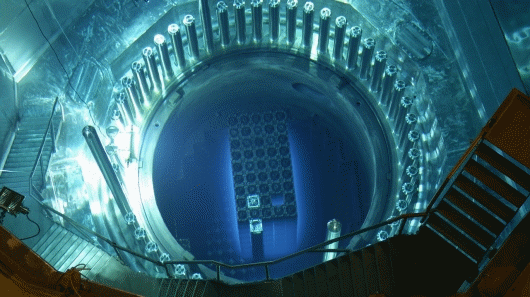 The reactor core of the Gosgen Nuclear Power Plant
One of the key challenges when designing nuclear reactors is finding materials that can withstand the massive temperatures, radiation, physical stress and corrosive conditions of these extreme environments
The reactor core of the Gosgen Nuclear Power Plant
One of the key challenges when designing nuclear reactors is finding materials that can withstand the massive temperatures, radiation, physical stress and corrosive conditions of these extreme environments
A nuclear reactor is a device in which controlled fission chain reaction takes place.
Fission chain reactions occur because of interactions between neutrons and fissile isotopes (such as 235U). The chain reaction requires both the release of neutrons from fissile isotopes undergoing nuclear fission and the subsequent absorption of some of these neutrons in fissile isotopes. When an atom undergoes nuclear fission, a few neutrons (the exact number depends on several factors) are ejected from the reaction. These free neutrons will then interact with the surrounding medium, and if more fissile fuel is present, some may be absorbed and cause more fissions. Thus, the cycle repeats to give a reaction that is self–sustaining.
Nuclear power plants operate by precisely controlling the rate at which nuclear reactions occur, and that control is maintained through the use of several redundant layers of safety measures. Moreover, the materials in a nuclear reactor core and the uranium enrichment level make a nuclear explosion impossible, even if all safety measures failed. On the other hand, nuclear weapons are specifically engineered to produce a reaction that is so fast and intense it cannot be controlled after it has started. When properly designed, this uncontrolled reaction can lead to an explosive energy release.